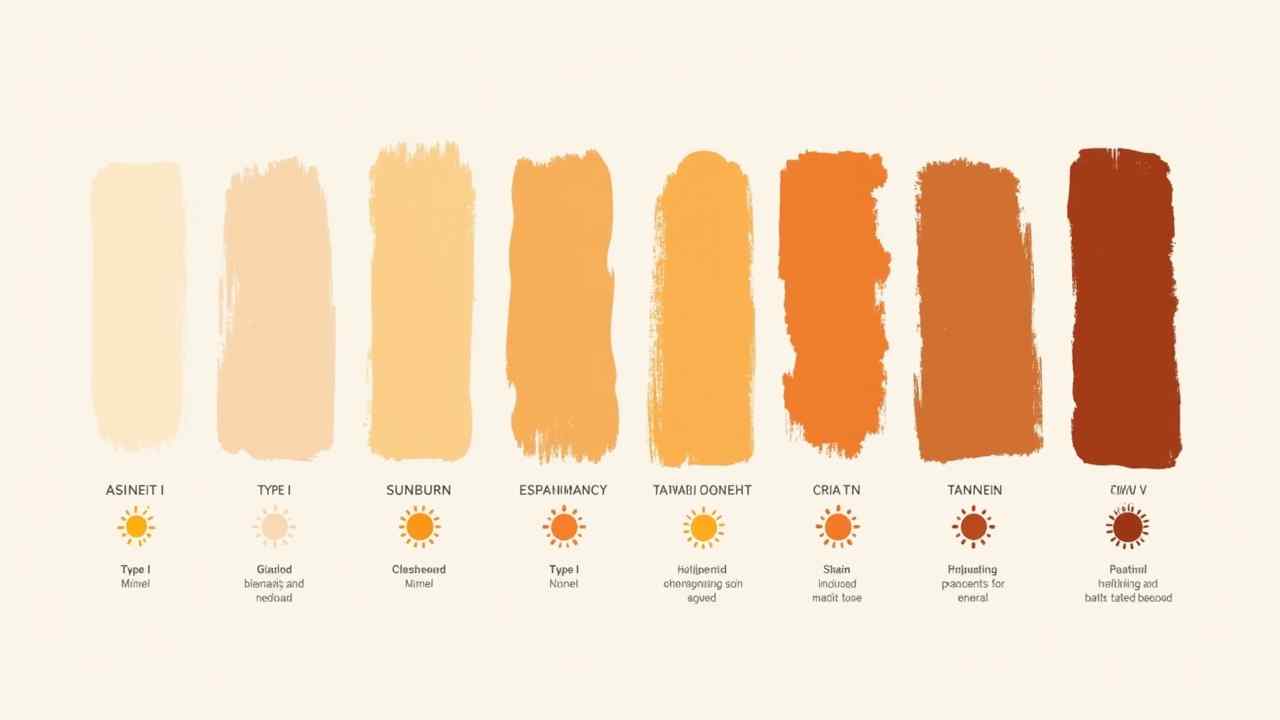
🎨 A Guide to the Skin Colors Chart (The Fitzpatrick Scale Explained)
🎨 What is a Skin Colors Chart? (A Guide to the Fitzpatrick Scale) 🎨
Human skin comes in a beautiful and vast spectrum of colors. In the world of dermatology, doctors need a way to classify skin. This is not just about color. It is about predicting how skin will react to the sun. The most widely used tool for this is a skin colors chart.
This system is known as the Fitzpatrick scale. It is a scientific tool. It helps doctors assess a person's risk for sun damage and skin cancer. It also guides them in performing cosmetic treatments safely. It is a cornerstone of modern dermatology.
This guide will explain the Fitzpatrick scale. We will describe the six different skin types. We will also explain why knowing your type is important for your health. Let's explore this fascinating classification system. ✨
🤔 What is the Fitzpatrick Scale?
The Fitzpatrick scale was developed in 1975 by Dr. Thomas B. Fitzpatrick. It is a numerical classification system for skin type. The most important thing to know is that it is not just about color. It is about how your skin responds to ultraviolet (UV) light.
The scale is based on your answers to two key questions. How much pain do you experience with sun exposure (burning)? And how much pleasure do you experience with sun exposure (tanning)? This helps to quantify your skin's sensitivity to the sun.
Dermatologists use this skin colors chart every day. It helps them provide personalized advice for sun protection. It also helps them choose the safest and most effective settings for treatments like lasers. It is an essential diagnostic tool.
👩🏻👩🏼👩🏽👩🏾👩🏿 What Are the Six Fitzpatrick Skin Types?
The scale divides skin into six distinct types. Each type has a characteristic appearance. It also has a predictable reaction to sun exposure. Find out which type sounds most like your skin.
- Type I: This is very pale, fair skin, often with red or blonde hair and freckles. This skin type always burns and never tans. It is extremely sensitive to the sun.
- Type II: This is fair skin, often with blue or green eyes. This type burns very easily and tans only with great difficulty.
- Type III: This is fair to beige skin, sometimes with golden undertones. This skin type burns moderately and will gradually tan to a light brown.
- Type IV: This is light brown or olive skin. This type rarely burns and tans easily to a moderate brown.
- Type V: This is brown to dark brown skin. This type very rarely burns and tans very easily and darkly.
- Type VI: This is deeply pigmented dark brown to black skin. This type never burns in the sun and tans very darkly.
☀️ Why is Knowing Your Skin Type on this Chart Important?
Understanding your Fitzpatrick skin type is very empowering. It helps you understand your personal risk factors. This allows you to take better care of your skin. It is a key part of your long-term health.
Knowing your type helps you take sun protection seriously. While everyone needs sunscreen, Types I and II are at the highest risk for sunburn. They must be the most vigilant. This skin colors chart is a tool for awareness.
It also relates to skin cancer risk. Lower Fitzpatrick types have a higher risk of melanoma. However, it is crucial to know that skin cancer can occur in all skin types. In darker skin tones (Types V and VI), it is often diagnosed at a later, more dangerous stage. That is why everyone needs sun protection. ✅